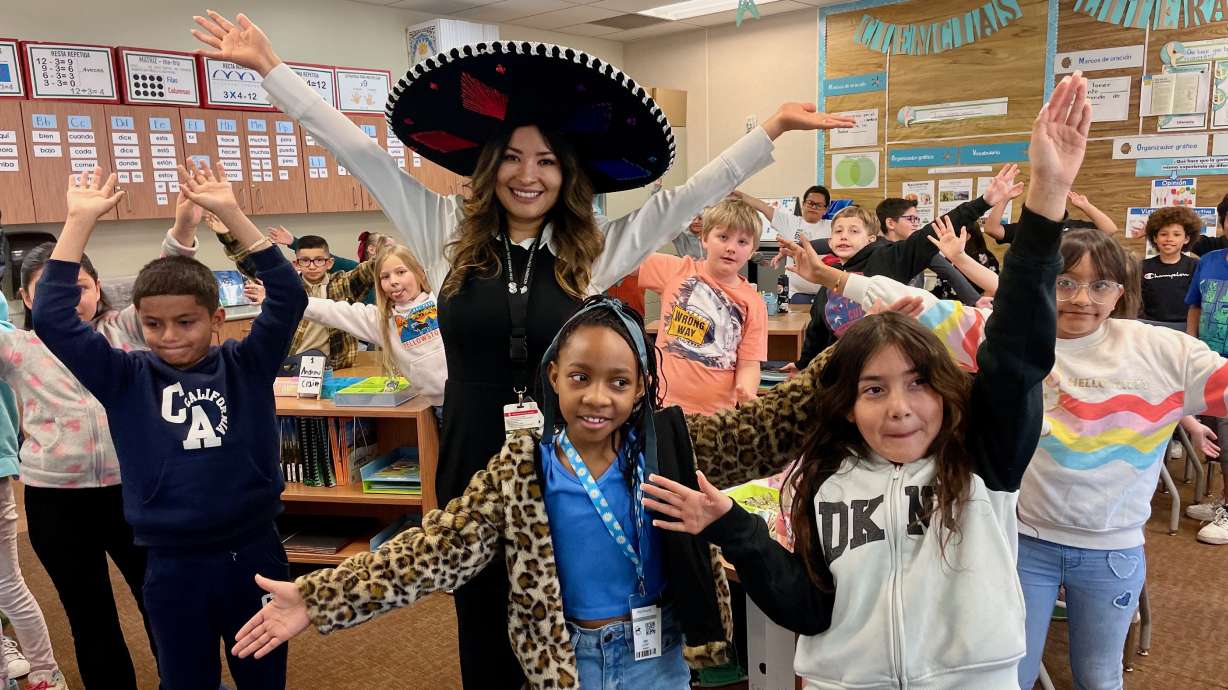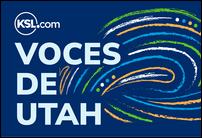Estimated read time: 4-5 minutes
- Lucia de la Cruz Rodriguez, from Mexico, teaches Spanish in a dual-language program at Midvale Elementary.
- She's part of a broader initiative to bring international teachers to the many schools in Utah with dual-language programs.
- Parents and educators say offerings involving international teachers help not only with language instruction but also with cultural enrichment.
MIDVALE — Professional growth may have been a key factor in Lucia de la Cruz Rodriguez's decision to come to Utah from Mexico to teach.
But the opportunity to promote the Spanish language and Mexican culture, particularly among the Mexican and Mexican-American kids in the United States, also figured big. She's in her fifth year as a third-grade instructor in Midvale Elementary's Spanish-English dual-language immersion program.
"I wanted to create a space where students could feel proud of their heritage, where their stories, music, art and traditions aren't marginalized but included and important," she said. "A place where culture isn't seen as folkloric but as a fundamental resource for learning and human connection."
De la Cruz Rodriguez, originally from the Mexican state of San Luis Potosi, isn't alone. She's one of around 25 from Mexico who have taught in varied Utah schools since 2016 as part of the Mexican government's Visiting Teachers Program, according to Alejandra Valdivia Colón, of the Mexican Consulate in Salt Lake City. Moreover, de la Cruz Rodriguez is part of an even larger contingent from Peru, Spain, Brazil, France, Germany and Taiwan who teach or have taught in the state's schools as part of the Utah Board of Education's efforts to place international teachers in the varied dual-language programs in Utah.
"We find that a blend of teachers from many parts of the world provides a rich cultural awareness for our students as well as experiences with the differing nuances of language dependent on countries, especially Spanish," said Robert Austin. Austin helps handle the logistics of securing visas for international teachers for the Utah Board of Education, working with representatives from varied countries.

Austin estimates that the state board sponsors around 75 international teachers each year to serve at the many dual-language immersion schools around Utah. They can typically remain for up to five years and are hired by the districts that employ them. They aren't the majority, though. Karl Bowman, world language and dual-language immersion specialist for the Utah Board of Education, estimates that international teachers represent "a smaller percentage" of instructors in Utah's dual-language schools.
There are many qualified American teachers or immigrants here with the background and skills to teach in dual-language programs, which typically offer a half day of instruction in English and a half day in the foreign language. Moreover, Bowman said, teachers coming from abroad face rigorous vetting to ensure they have the skills needed to teach in a U.S. school.
At any rate, Canyons School District, home to Midvale Elementary, has many, with foreign teachers coming from Mexico, Peru, Spain, China, Taiwan and France to teach the varied languages of the countries. The district is home to 10 elementary schools with dual-language programs, said Jeffrey Haney, the district spokesman.
De la Cruz Rodriguez, the third-grade teacher at Midvale, sees her role as weaving academic and cultural instruction together. Aside from teaching math, science and Spanish, all in Spanish, she also blends in lessons about her country's culture, including Mexican Independence Day, Day of the Dead and more. During one of her classes earlier this week, she sang Mexican songs with her students wearing a sombrero.
Read more:
Teaching a dual-language class, she said, is an opportunity to build cultural bridges. About 62% of Midvale Elementary students are Latinos, according to state board figures.
"As Mexican teachers in a school with a Hispanic community, our work is more than just teaching academic content. We're truly cultural ambassadors who transport the essence of our heritage to each classroom," she said.
Parents of students in de la Cruz Rodriguez's class say having a native Mexican teacher like her is a big plus.
Guadalupe Lagunas, for one, likes that the teacher — who garnered teacher of the year honors for 2025 at Midvale Elementary — can convey information about Mexican music, food, history and celebrations. Lagunas is originally from Mexico and wants her son Josue to be able to speak Spanish and be knowledgeable about Mexican culture to foster better ties with family still in Mexico. "We want our kids to learn all of that and treasure it," she said.
Jeff Jackson, who has two kids in the Midvale dual-language program, said the offering opens students' minds to the broader world.
It's important for students "to participate and learn another language and learn another culture. Honestly, it opens up their mind," he said. "It's a powerful thing. I'm a huge supporter of it."
Correction: Comments about Mexico's Visiting Teachers Program were incorrectly attributed to Gloria Gonzalez Acevedo.













